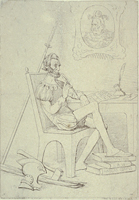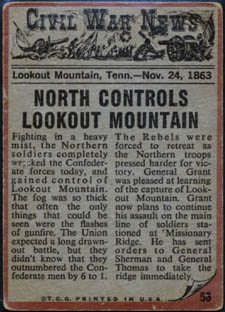As I mentioned yesterday, The Atlantic Monthly is knocking the sesquicentennial celebrations out of the park. This piece on the Gettysburg Cyclorama is fantastic, and is making me greatly regret declining a ticket on both my trips to the park.
Four hundred feet long. Fifty feet high. It was art on an astonishing scale. All four versions were housed in massive, purpose-built rotundas. In Boston, for example, visitors walked through a grand crenelated archway, paid for their tickets, and proceeded along a dark winding passage toward the viewing platform. They ascended a winding staircase to another time and place. “The impression upon the beholder as he steps upon this platform,” one reviewer wrote, “is one of mingled astonishment and awe.”
July 3, 1863. The Battle of Gettysburg rages on for a third day. From just behind Cemetery Ridge, visitors watched Pickett’s Charge crash against the Union lines. There, in the distance! General Lee and his staff. Much closer, an artillery caisson explodes. All around, soldiers crouch, charge, level rifles, bare bayonets, fight, die.
A dozen different twists heightened the illusion. Drapes hung over the platform from the ceiling, limiting and directing the view and leaving the viewers shrouded in shadows. The indirect lighting shone most brightly on the top of the canvas, illuminating the sky in brilliant blue. The canvas bowed outward by a foot in the middle, receding as it approached the ground and horizon. Tinsel lent a convincing gleam to the bayonets and buckles in the painting.
What most astonished observers, though, was the diorama, which began near the edge of the platform and ended at the painting, 45 feet away. Hundreds of cartloads of earth were covered in sod and studded with vegetation, then topped with the detritus of the battlefield. Shoes, canteens, fences, walls, corpses: near the canvas, these props were cunningly arranged to blend seamlessly into the painting. Two wooden poles, painted on the canvas, met a third leaned against it to form a tripod. A dirt road ran out into the diorama. A stretcher borne by two men, one painted and the other formed of boards, had its poles inserted through holes in the painting. “So perfect is the illusion,” as the Boston Advertiser voiced the common sentiment, “that it is impossible to tell where reality ends and the painting begins.”
http://www.theatlantic.com/national/archive/2011/05/the-great-illusion-of-gettysburg/238870/




